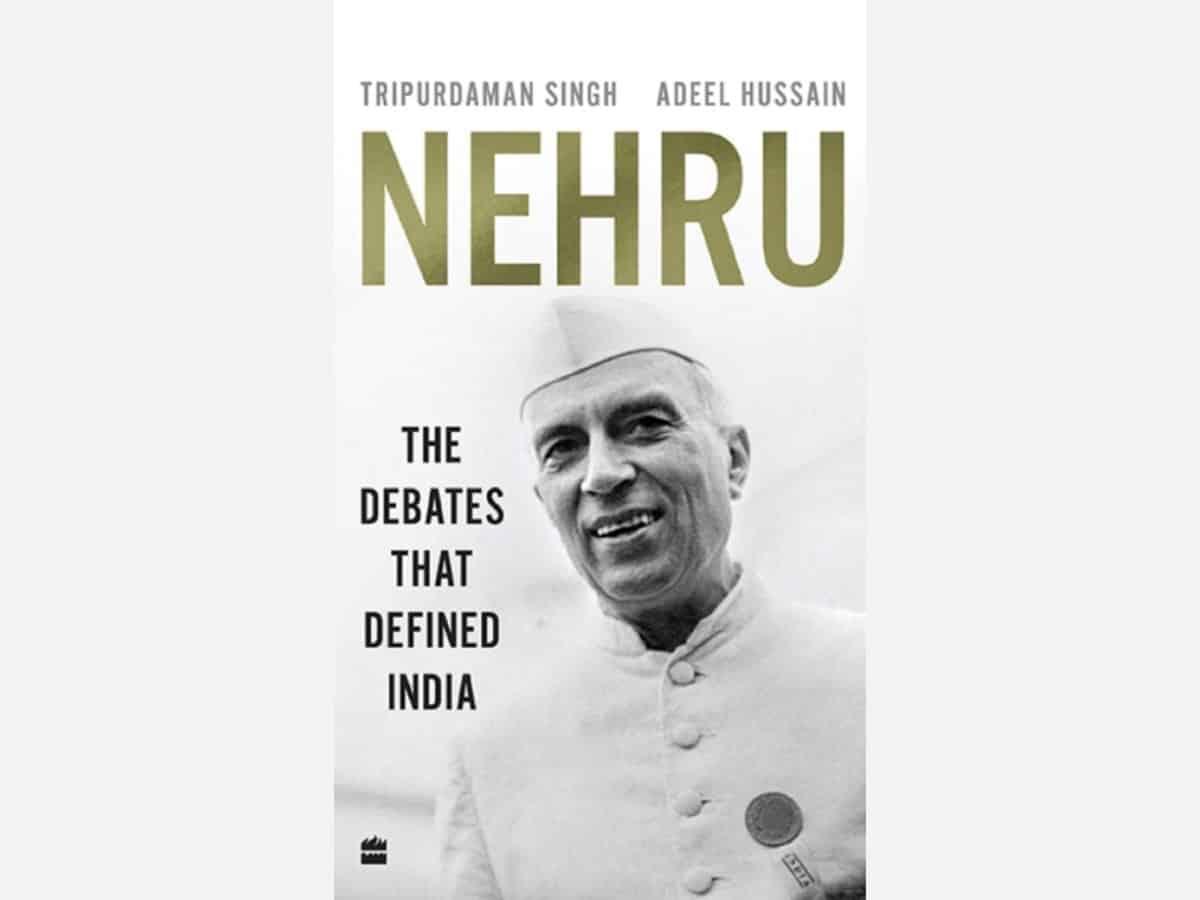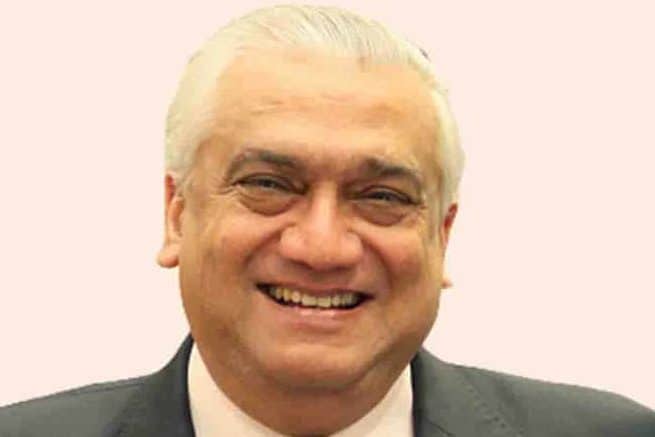

The authors present the foreign policy debate largely in the context of relations with China. They contrast Nehru’s world-view, anchored firmly in progressive anti-imperialism and “Asianism”, with Patel’s hardheaded and unsentimental critique of China, its intentions and the threat it poses to India. This is based on Patel’s well-known letter to Nehru, dated 7 November 1950, in which he refers to “China’s malevolence”, its perfidy, and that it is not a friend but a “potential enemy”.
This letter has enjoyed considerable public airing from critics of Nehru’s foreign policy, particularly his China policy, holding him personally responsible for the 1962 debacle and, by implication, the Chinese perfidy on show in Ladakh at present.
Patel’s letter of 7 November 1950 is in two parts: the first part raises concerns about the recent Chinese annexation of Tibet and the threat this poses to India. The second part sets out what India should do to safeguard its interests in terms of strengthening infrastructure in the border areas and develop policy positions on larger issues, such as the McMahon Line, representation in Tibet and China’s membership of the United Nations.

Nehru prepared a note for the cabinet on 18 November 1950 that contained several of the points made by Patel and obtained cabinet approval a few days later. The authors of this book say that, being very ill, Patel did not attend the meeting and, thus, Nehru got his note approved without any opposition. Nehru briefed the ailing Patel later.
Here, the authors say that, with Patel gone, “the challenge to Nehruvianism evaporated” and “Tibet was abandoned at the altar of friendship with China”. Losing all self-restraint, they refer to Nehru’s “vapid, ineffectual slogans of anti-imperialism and world peace”, but do not clarify what they mean.
The issue of Tibet was obviously much more complex than what the authors have set out here, nor was Nehru the naïve, uninformed idealist they have painted. As former foreign secretary Nirupama Rao, in her recent book, The Fractured Himalayas, has pointed out, in September 1949, well before Patel’s letter, Nehru had written to Finance Minister John Matthai that “Chinese communists are likely to invade Tibet sometime or other … within a year”, which would bring the Chinese and Tibetan communists “right up to our Assam, Bhutan and Sikkim border”; he had then urged that “these areas should have good communications”.
Nor did Nehru ever ignore Patel’s letter. Rao says that a day after receiving the letter, Nehru asked the secretary general in the Ministry of External Affairs to consider India’s foreign policy in the UN and in regard to neighbouring countries, including China, “with reference to our defence problems”. He said, “we cannot be happy to have a strong centralized and Communist Government in control of the Tibetan border with India”.
He was also aware that China would raise matters relating to the border with India and affirmed: “We consider the McMahon Line as our frontier and we are not prepared, on any account, to reconsider the question.” And while he did not anticipate a fullscale invasion, he warned about “infiltration and intrusion of small groups”.
Nehru also took cognisance of Patel’s suggestions relating to infrastructure along the Sino-Indian border. A high level committee was set up under the deputy defence minister to “study the problems created by the Chinese aggression in Tibet and make recommendations about the measures to be taken to improve administration, defence communications, etc, in all the frontier areas”.
Nehru and Patel

There is no doubt that Nehru and Patel were very different persons and politicians – Nehru was animated by a larger, grander vision of an India straddling the global landscape; Patel was more grounded in the here and now, more comfortable with the conservative sections of the Congress. In the ongoing Cold War, he was possibly more at ease with the Western alliance, rather than the nonalignment and the tilt in favour of the Eastern bloc that informed Nehru’s global vision. In personality, while Patel was less emotional and more clinical in assessing issues, domestic and foreign, Nehru was enthusiastic, passionate and often driven by strong feelings in assessing issues at hand.
Gandhiji clearly understood the need for these two towering personalities to work together in shaping the new nation – born as it was out of a mix of violence and idealism. He seems to have strongly conveyed to Patel the need to back Nehru, while rendering sage advice quietly. Nehru’s enthusiasms often clashed with Patel’s dour restraint, and frequently tested his loyalty.
The authors reserve their harshest remarks about Nehru in the context of foreign policy; they in fact even quote Kennedy and Nixon to support their critique. They find fault with Nehru’s grand vision of India’s role in world affairs, pointing out that India “lacked both the military might and the economic resources” to sustain this vision.
They fail to say clearly what the alternative policy should have been, but it is camouflaged in the text – they believe India should have joined the western alliance, thus aligning themselves with the present-day votaries of the US embrace. They even suggest that Patel would have taken India in that direction when, in his last letter he wrote that consideration of the Chinese takeover of Tibet “may lead us into wider questions of our relationship with China, Russia, America, Britain and Burma”.
The authors highlight “the conceptual challenge to the Nehruvian worldview that was taking shape in the minds of Patel and many other detractors”. They however fail to see the implications of the active role of the Americans in obtaining this position. Just three days after Patel’s letter to Nehru, on 10 November 1950, the US ambassador in Delhi, Loy Henderson cabled his secretary of state that the Tibet developments “had resulted in increasing dissatisfaction within the government with the direction of India’s foreign policy” and that even Nehru’s supporters “had recognised the threat posed by international communism and the need for a shift in policy”.
Henderson then quoted Patel “stating privately” that he would shortly insist in the Cabinet “that India not only change policy in direction of closer cooperation with Western powers, particularly the US, but that it make an announcement to that effect”. The ambassador added that Patel planned to resign from the cabinet and “break openly with Nehru than to allow matters to drift”, and that he had the backing of several senior leaders in mounting what amounted to a coup d’état to unseat Nehru. The authors write that the failure of this attempted coup is due to fate – Patel’s ill-health and his failure to attend the cabinet meeting on 21 November.
The US obviously had a source fairly close to Patel and had been persuaded that the coup against Nehru would be successful. The ambassador was perhaps misinformed or deliberately misguided by his informer; given Patel’s loyalty to Nehru, there is no reason to believe that, at this early stage in the history of free India, American wishful thinking had any basis in reality. But what this story does make clear is that the US has at no stage abandoned its effort to co-opt India into its strategic orbit, an effort that is particularly robust in present times.
A backward look in a divided polity
In their Introduction, the authors state that in putting this book together they were conscious that the issues discussed here “have been resurrected as matters of raging dispute in India” and that Nehru’s legacy is being “questioned like never before”.
But this reviewer at least ended the book with some dissatisfaction. The contextualisation of each dispute has generally been quite inadequate – particularly the two sections relating to post-Independent India. Here, it appears, the authors not only sought to revisit the earlier discussions, but they also placed themselves not just as observers but as participants – their hostility to Nehru is palpable and generally unfair.
Going beyond the matter of China, which has been briefly examined above, the authors’ statement that “one of major functions of Indian diplomacy then became the projection and protection of Nehru’s image as the champion of the Third World” is without foundation and betrays an ignorance of the values and sense of purpose, consensually held, that drive Indian diplomacy. Nonalignment and, later, strategic autonomy were very powerful forces that influenced Indian foreign policy and imparted deep confidence and pride to Indian diplomats.
Though attempts are being made to subordinate India to western purposes today – efforts in which the latter had signally failed in the Nehruvian (and post-Nehruvian) periods – I believe that independence in decision-making and action still remains at the heart of Indian diplomacy, despite the blandishments and pressures that western powers and their cohorts at home have mobilised.
One final cavil. If debates of nearly eighty years ago are to be revisited, should not an attempt have been made by the authors to provide, in a concluding essay, their assessments on where these issues stand today? Such an assessment would have, I believe, supported the validity of most of Nehru’s values, perspectives and principles – which far lesser beings are today seeking to demolish, with venom and violence.
Nehru: The Debates that Defined India
Tripurdaman Singh and Adeel Hussain
Fourth Estate/ HarperCollins India, 2021
Rs 599, Pages 275
Talmiz Ahmad is a former diplomat, holds the Ram Sathe Chair for International Studies, Symbiosis International University, Pune.



